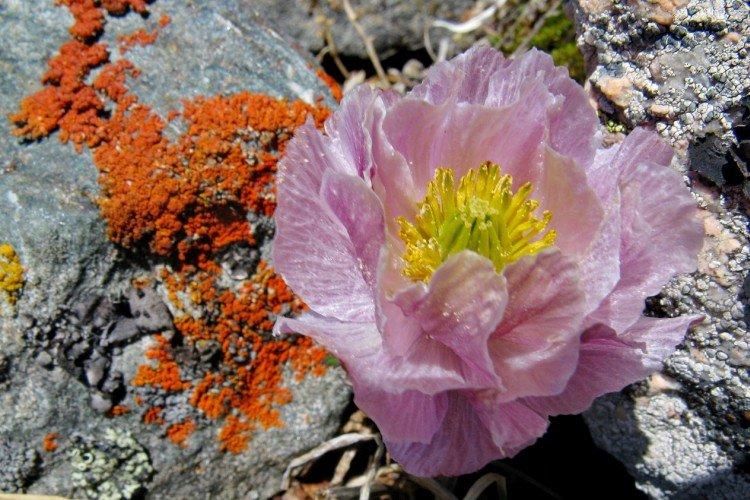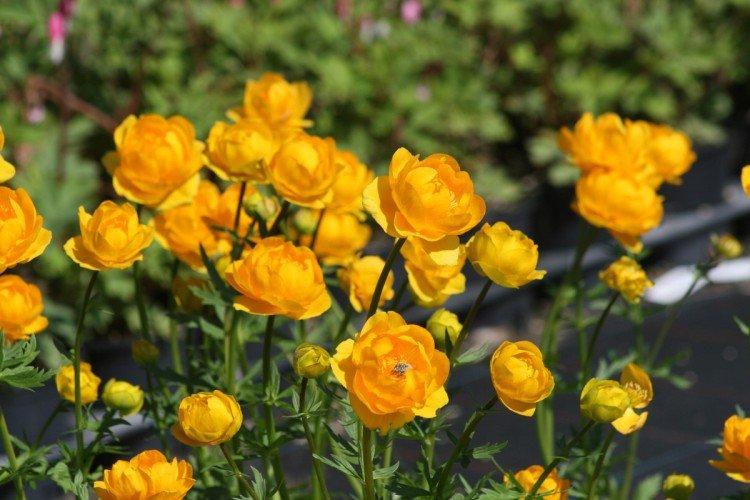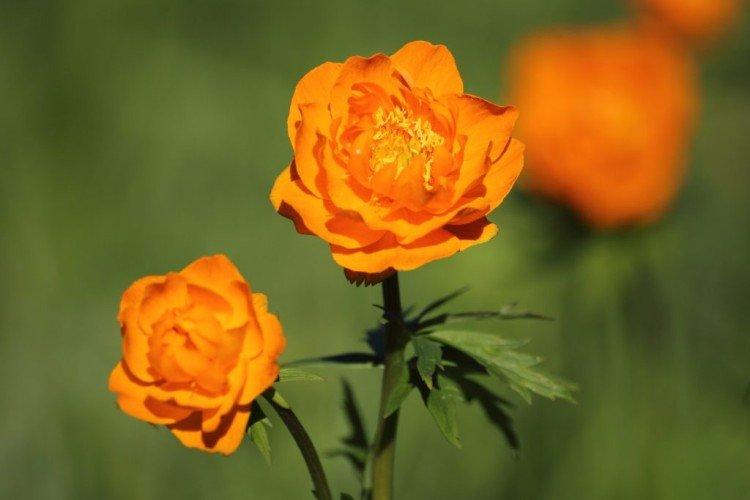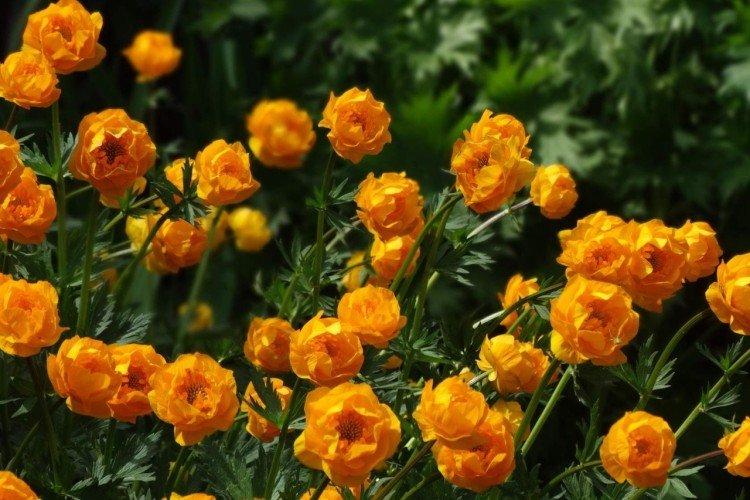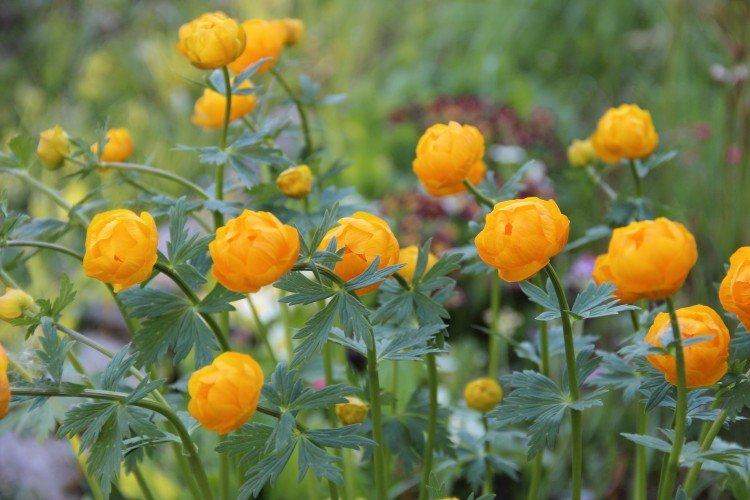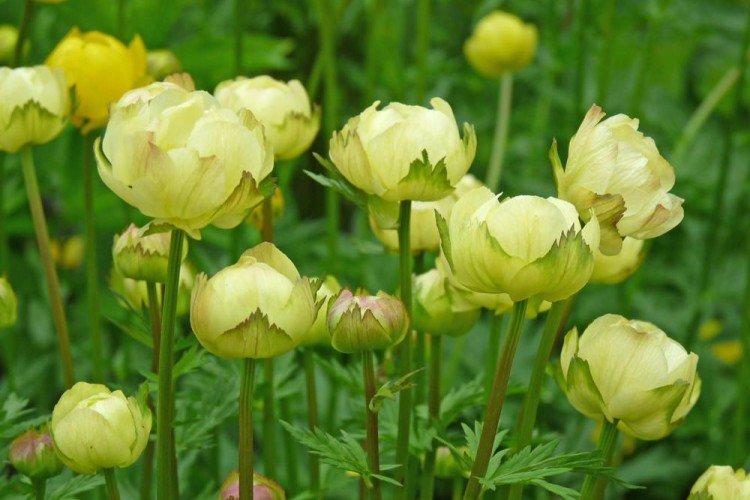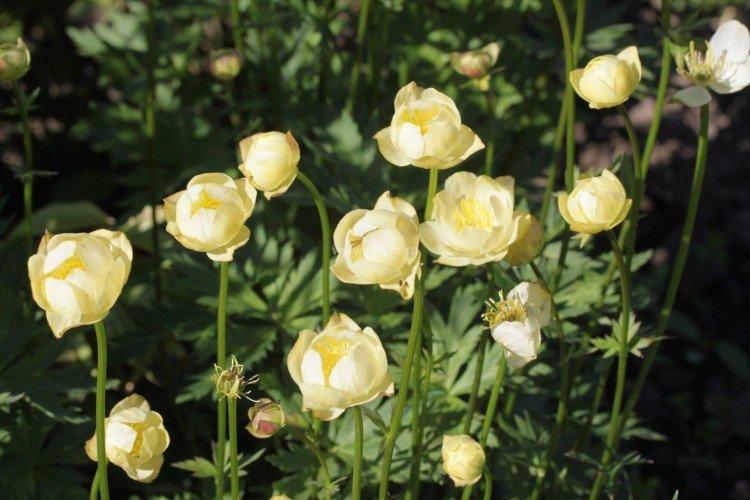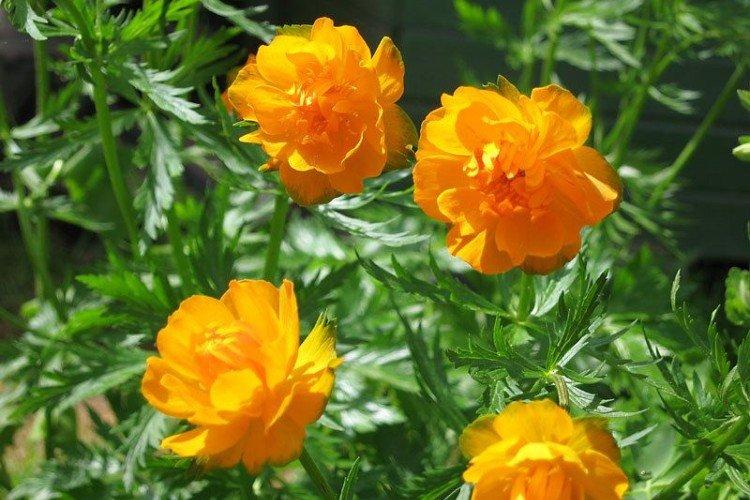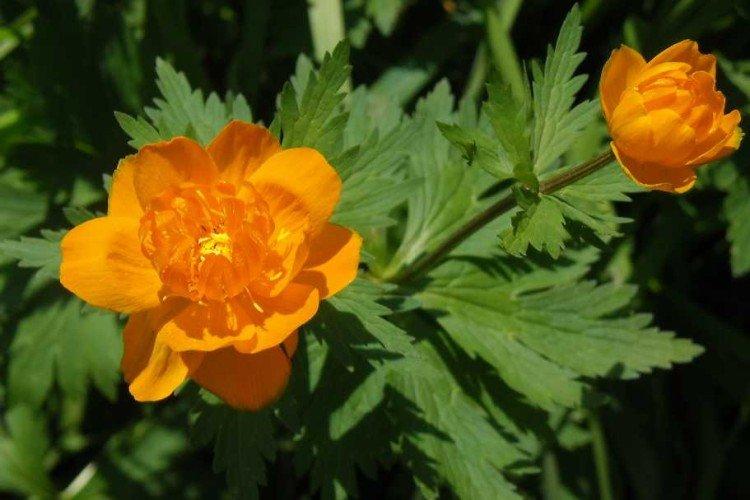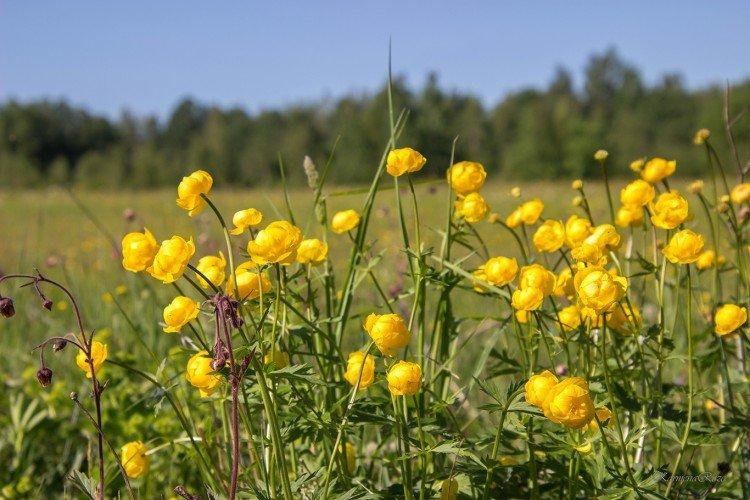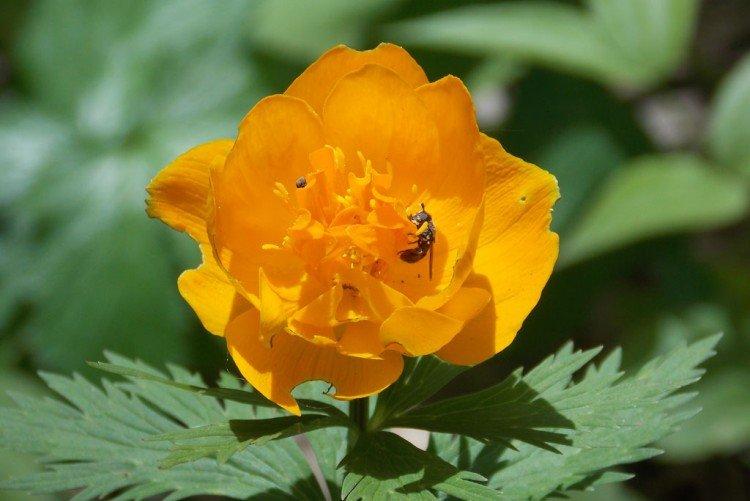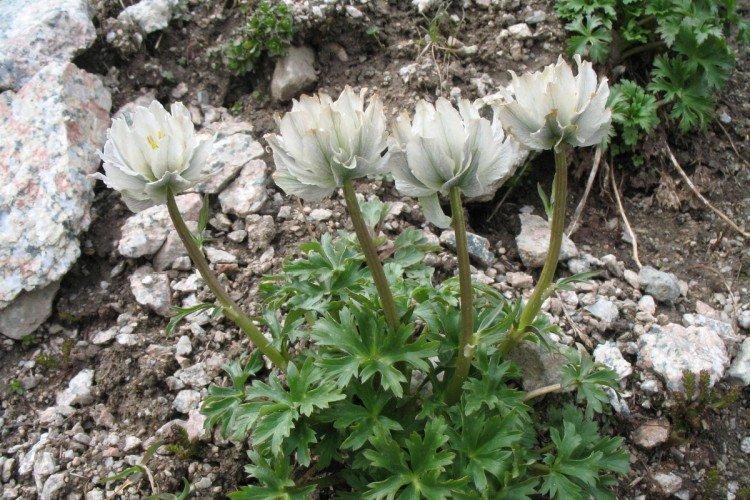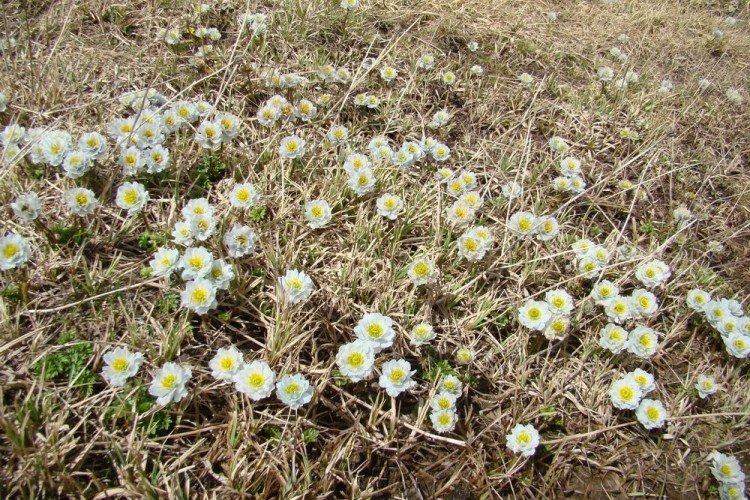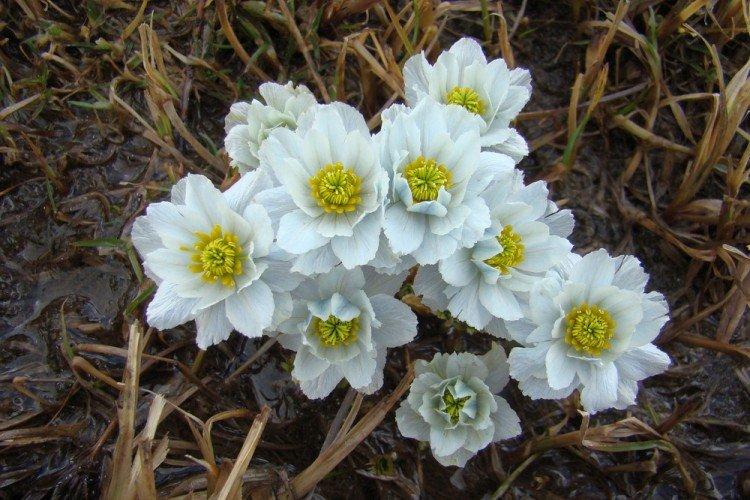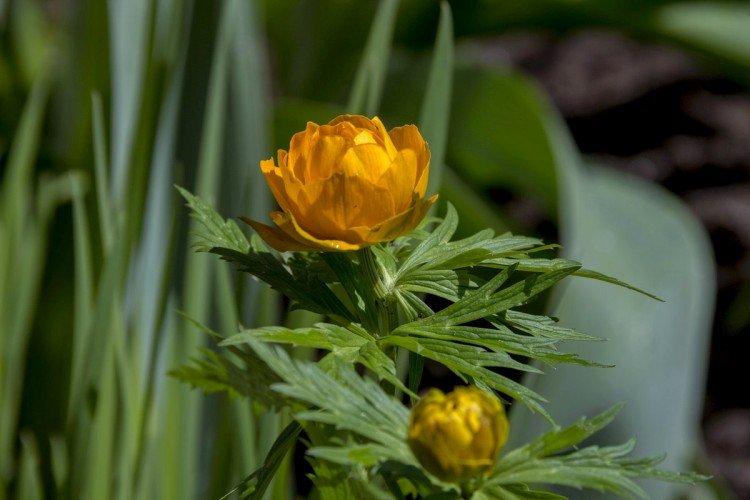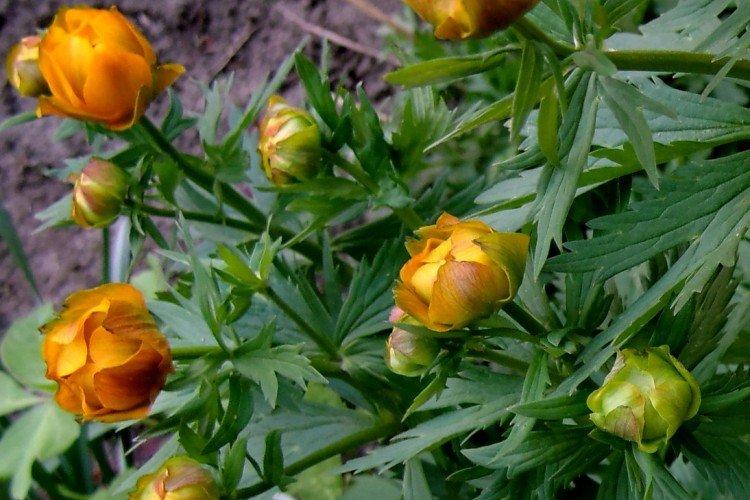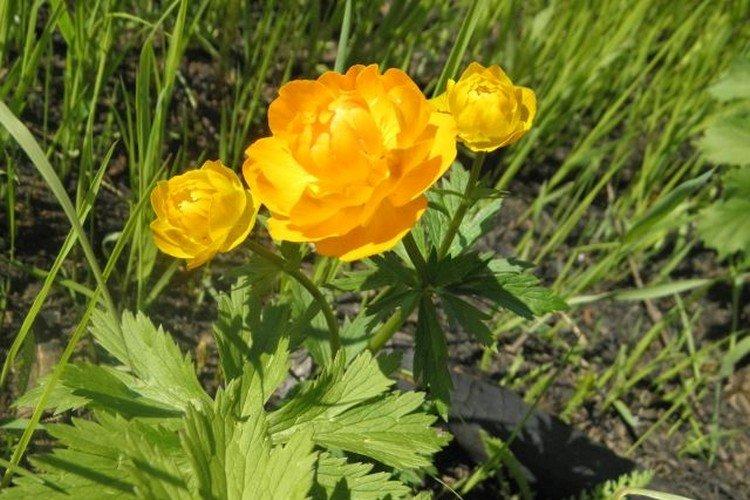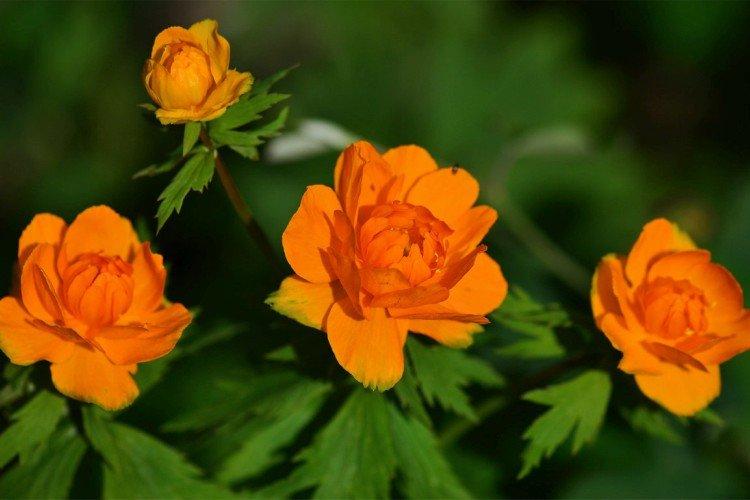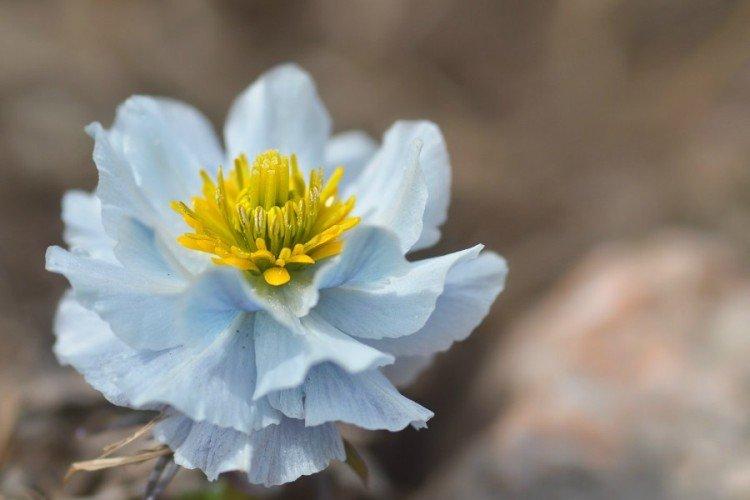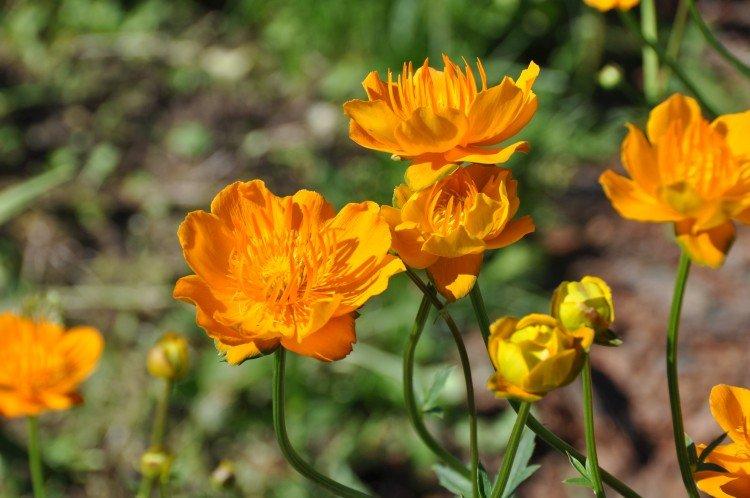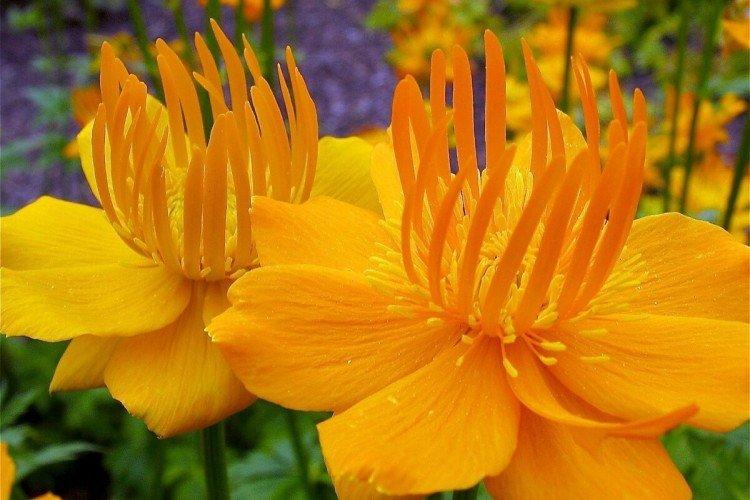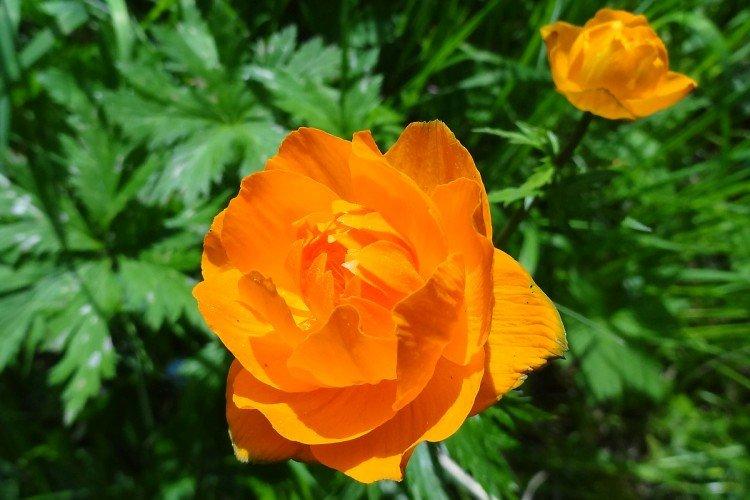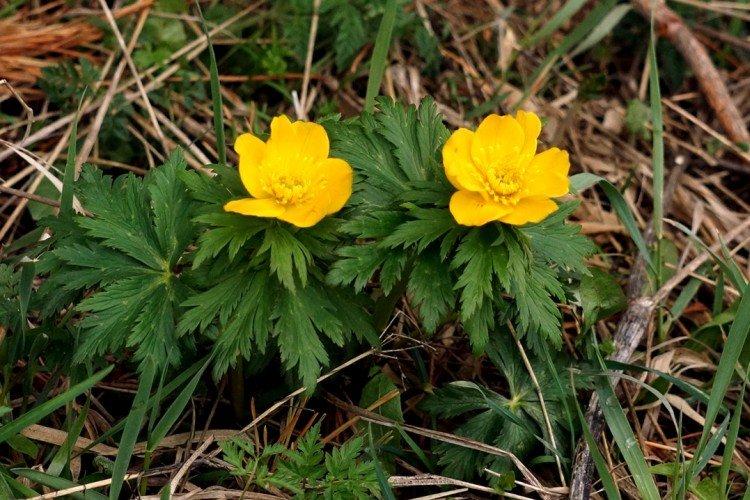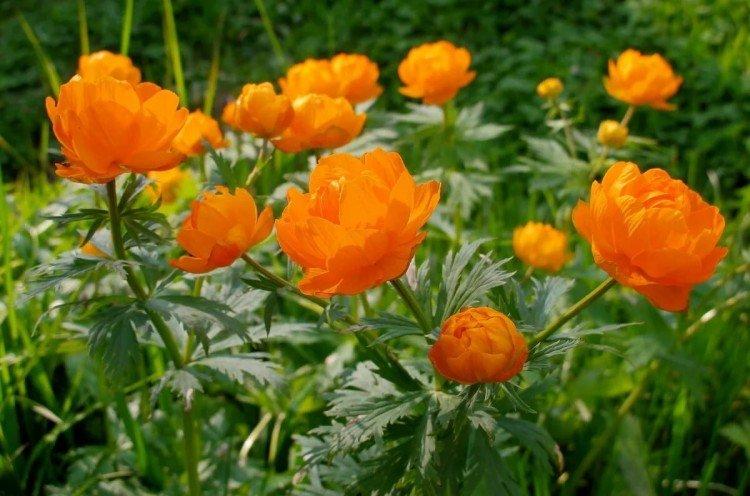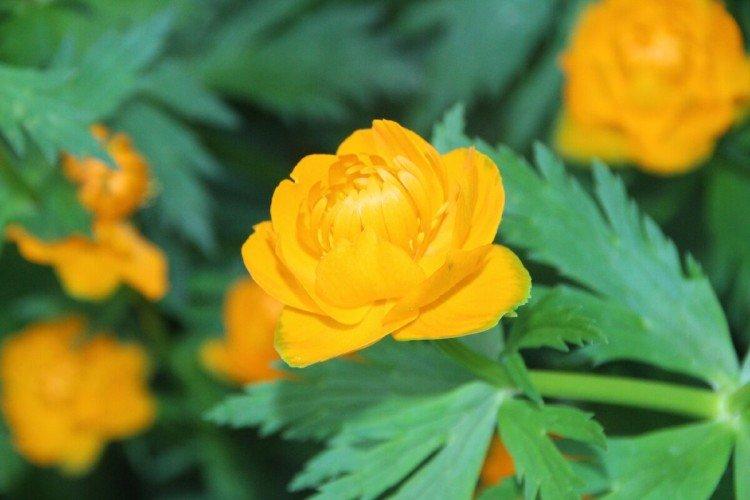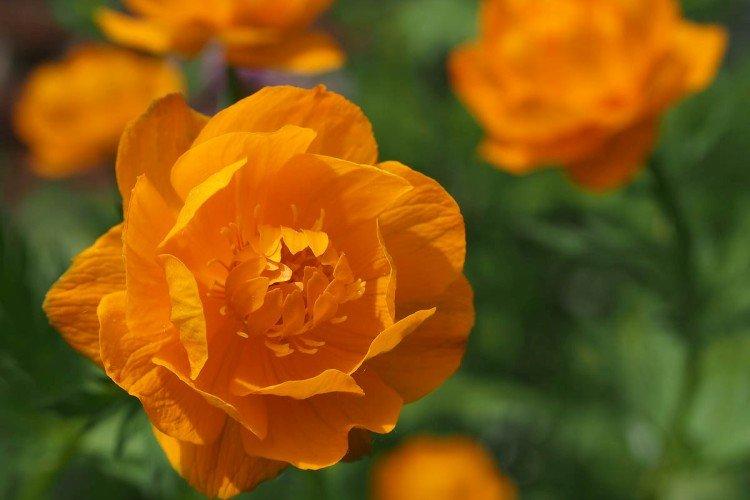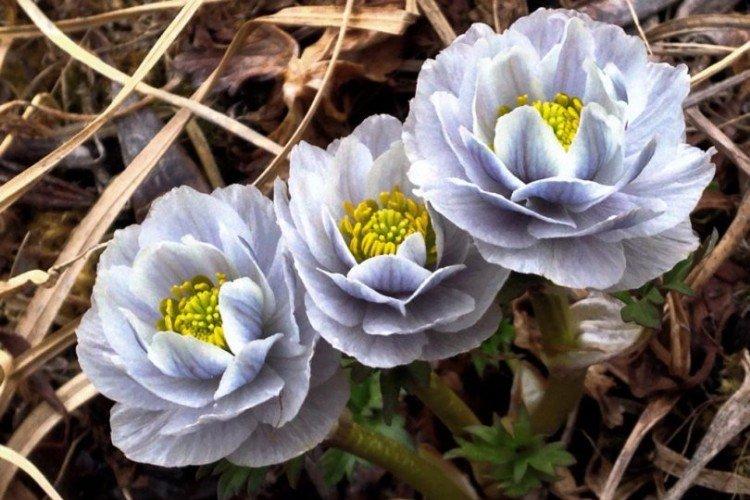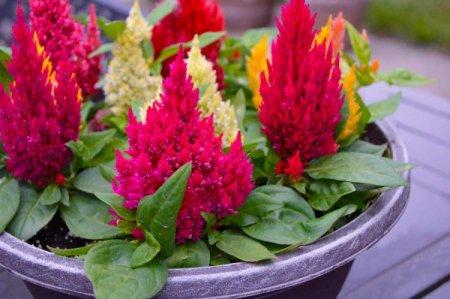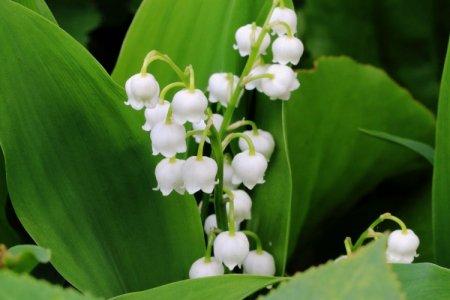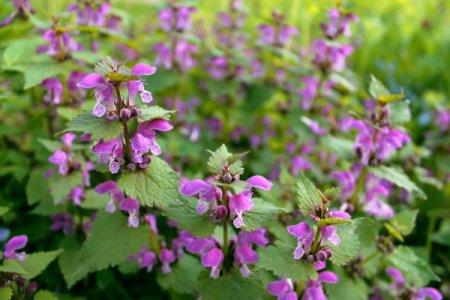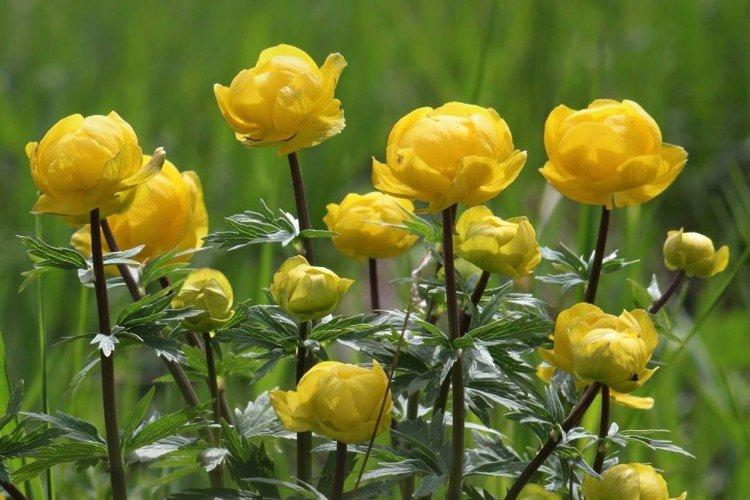
Annuals are, of course, good. But what about beautiful flowering perennials? And here a bright and spectacular swimsuit comes to the aid of gardeners. It blooms in early summer, and each flower is like a small sun!
general information
The Bathing Lady is a herbaceous buttercup perennial, common in almost all continents. She prefers to settle in meadows, glades and near rivers. In some regions, it is called the troll flower, because it is believed that it is this plant that is most liked by mythical forest creatures.
The height of the swimsuit reaches 90-100 cm. Branched stems are covered with simple lobed leaves with a serrated edge, which gather from the bottom into a basal rosette. The diameter of spectacular double flowers, similar to golden balls, is up to 8 cm.
The bather is actively growing in April and is rapidly gaining momentum in the sun. By May, you can see the first buds, and flowering lasts up to 3 weeks. In recent years, breeders have bred a lot of hybrid varieties for every taste.
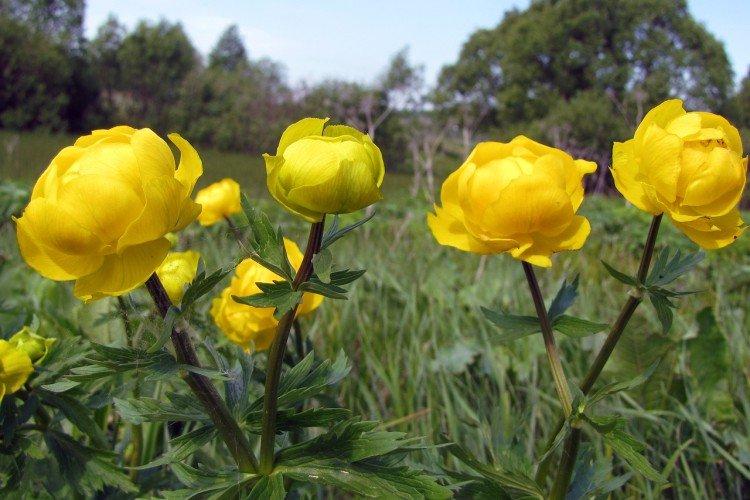
Types of swimwear
The bather is very easily pollinated among themselves, which is why you can even independently and accidentally breed a couple of new hybrids. But first, let's take a look at the main varieties!
European swimsuit
A forest variety that has been cultivated for over 300 years. She feels great even in Western Siberia. It is a perennial 1 m high with large spherical flowers.
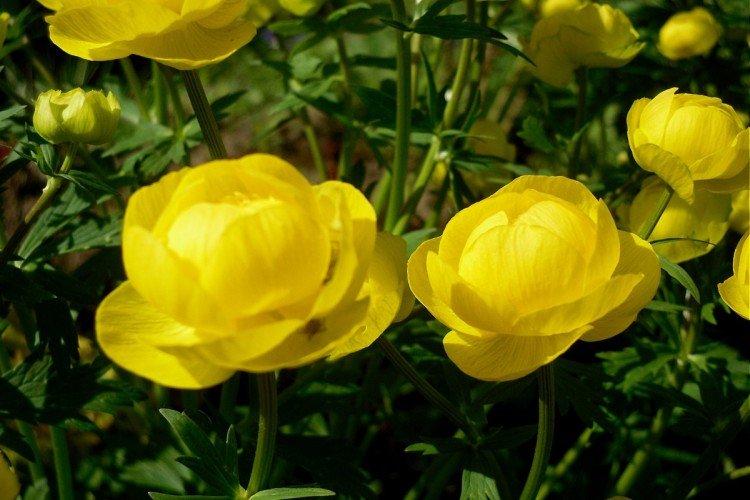
Loose swimsuit
A small bush up to 25 cm in diameter looks very voluminous and fluffy. But the species got its name not for this, but for the loose root system, which is very easily divided for reproduction.
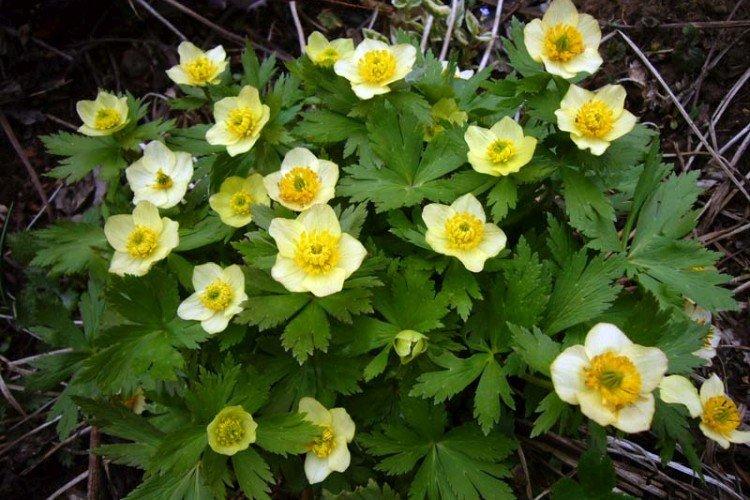
Asian swimsuit
Unlike the European one, they feel great in the highlands and in the tundra. The medium-sized species stretches to 60-70 cm and is densely covered with orange flowers 5 cm in diameter.
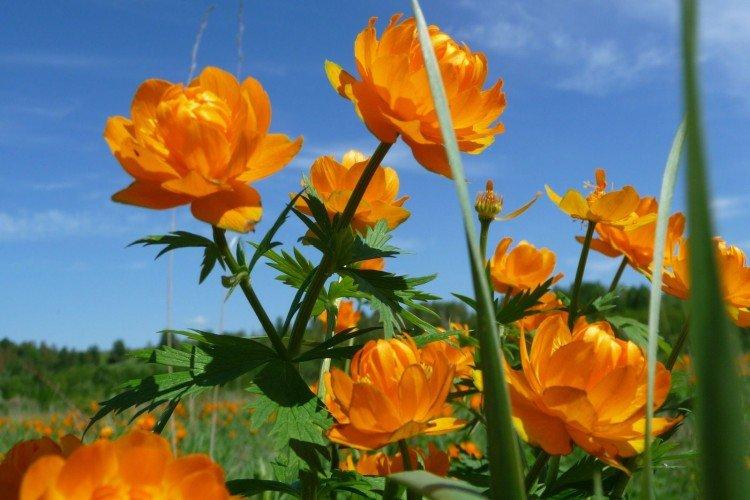
Altai swimsuit
A tall, tall variety with shoots up to 90 cm blooms with large golden, orange or red flowers 5 cm in diameter. It is a very popular herb in medicine.
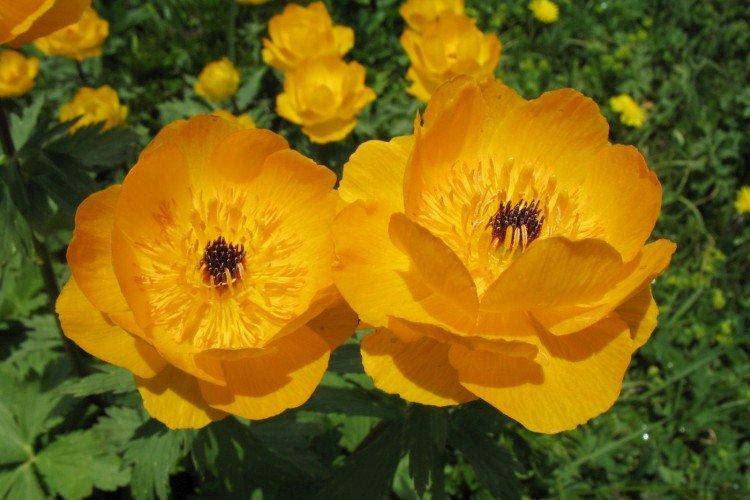
Purple swimsuit
It is also called the alpine rose, and it is remarkable primarily for its unusual bluish-lilac shade of petals. It is on the basis of this type that all decorative varieties of cold colors are derived.
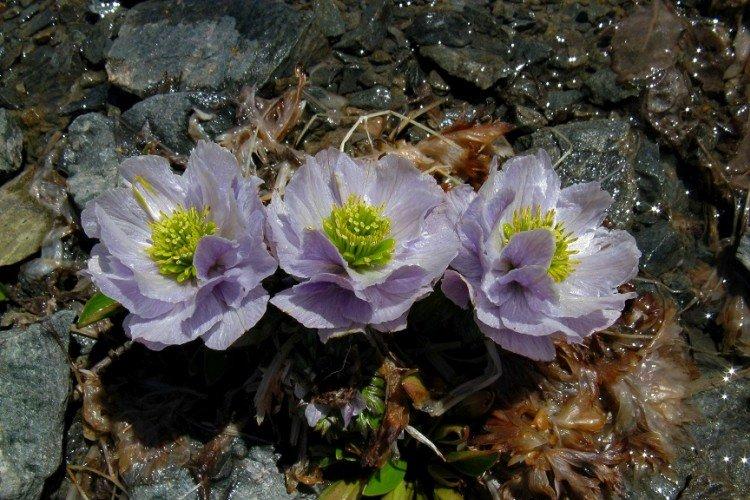
Chinese swimsuit
The graceful decorative look differs from its Asian counterparts in more open and wider flowers. The Chinese swimsuit blooms later than most others, somewhere in the second half of July.
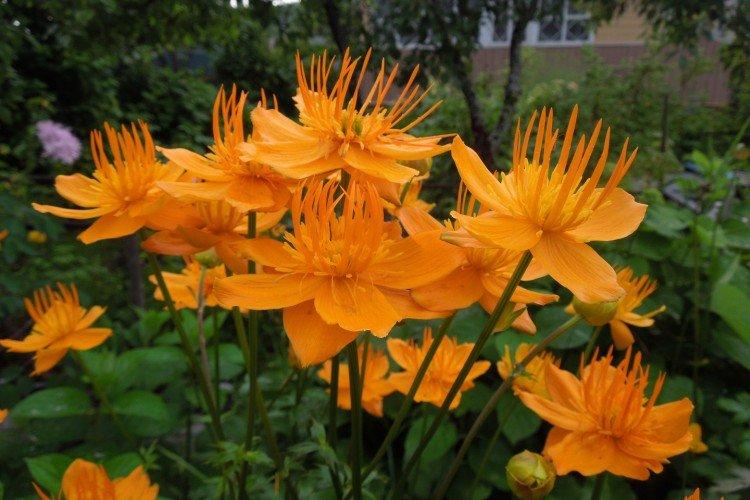
Swimsuit care
The swimsuit has practically no special requirements. The main thing is to remember that this is a moisture-loving plant, and it definitely needs a moist soil. In dry soil, it simply will not bloom.
Temperature and lighting
The bather loves warmth and diffused sunlight. She can perfectly plant areas in the shade near tall ornamental shrubs. Avoid prolonged exposure to direct sunlight.
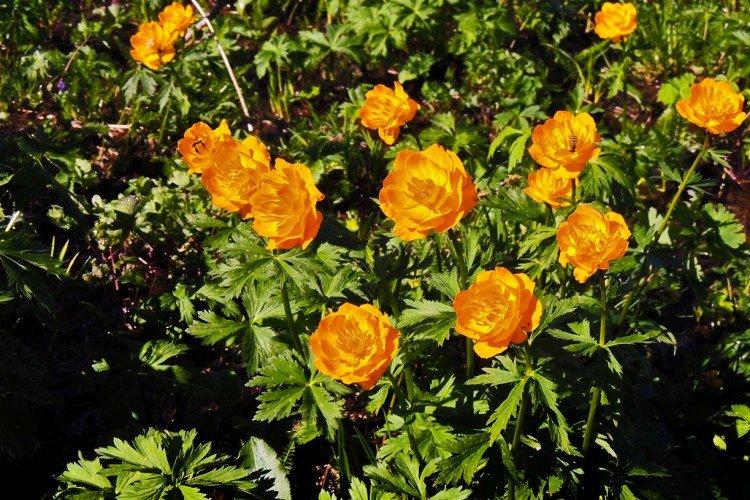
Watering
The swimsuit needs to be watered often, abundantly, but without overkill. Make sure that the soil is always slightly damp, but not swampy. Lack of water instantly affects the condition of the bush, especially the young one. To maintain stable conditions, mulch the soil.
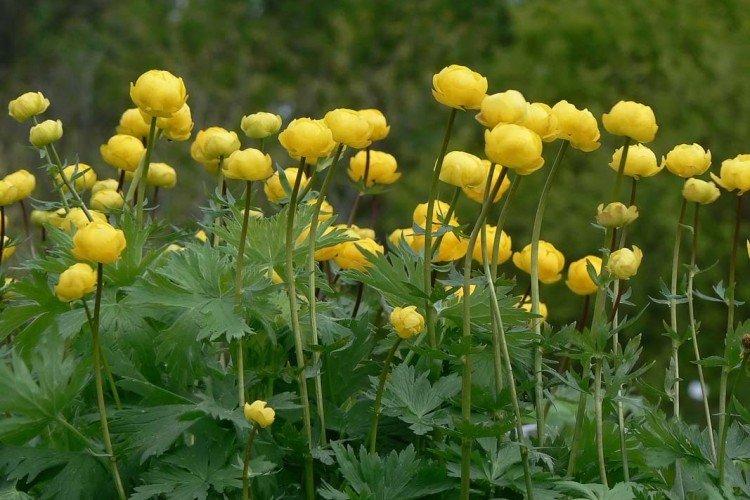
The soil
As we said, the soil must be sufficiently moist. A medium loamy soil is well suited, but without stagnant water. If the soil is too sandy, add sphagnum and peat to the holes when planting to retain moisture.
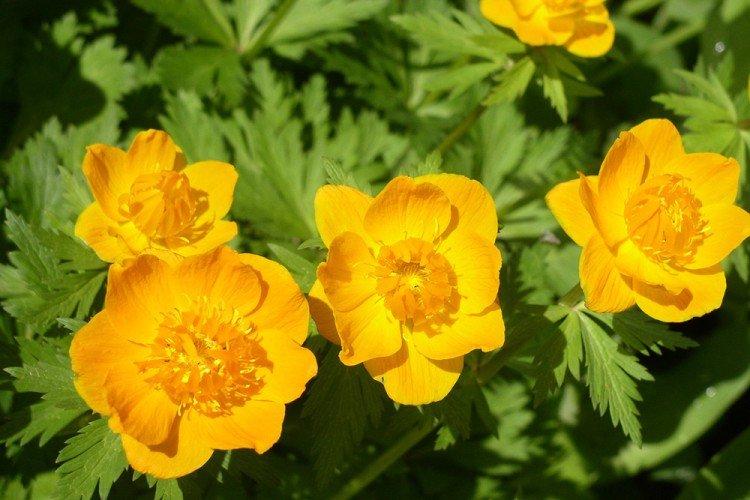
Fertilizers and feeding
Additional feeding of swimwear is not particularly needed, but fertilizers can be applied during the formation of buds to stimulate early flowering. Repeat the procedure twice more with an interval of 2-3 weeks. In addition to mineral fertilizers, organic matter, humus and peat are used.
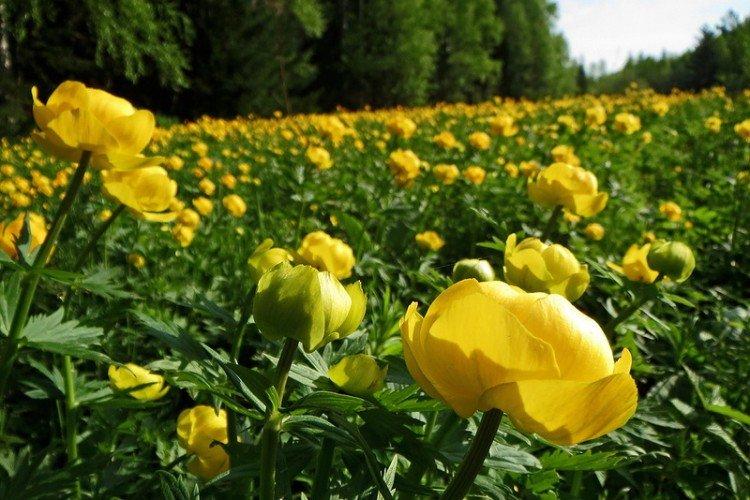
Wintering
The bather endures the winter without additional preparation and shelter. It is enough to cut the leaves in October, but wait until they fade on their own. Leave 2-3 cm of petioles above the ground to protect the recovery bud inside the socket.
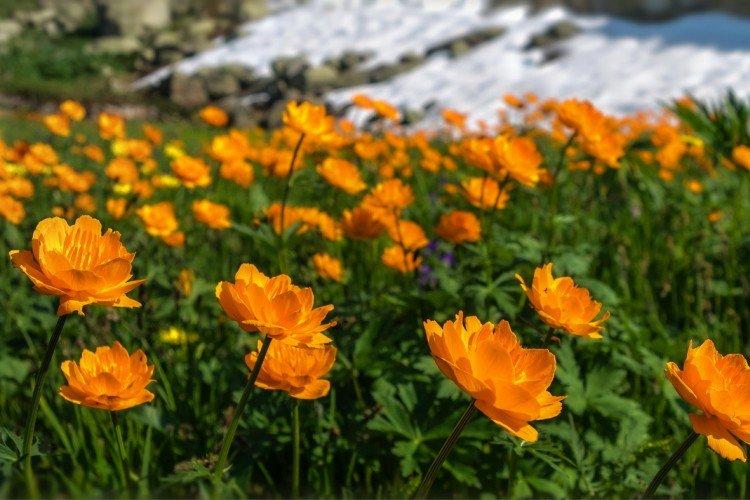
Planting and breeding a swimsuit
The bathers are not very convenient to germinate from seeds, because they have poor germination and require a long preparation. At home, the easiest way is to buy already sprouted seedlings.
It is best to plant a swimsuit on a site in the summer, so that the plant has time to take root and grow stronger before winter. Transplant seedlings with an earthen lump into the pits with a step of 40-50 cm.The depth should be such that the root collar goes 2 cm underground.
Cut the leaves so that the plant does not waste energy, and after a couple of weeks it will give new ones. In the future, try not to transplant the swimsuit unless absolutely necessary, because she does not like moving.
An adult swimsuit can be rejuvenated and propagated by dividing the bush. In the fall, the plant is dug up, carefully separated and immediately planted so that the bushes have time to start before winter. Delenki are planted as quickly as possible so that they do not dry out.

Pest and disease control
The most dangerous enemy of the swimsuit is nematodes, which literally settle in the tissues of the plant. Brown spots quickly spread over the leaves, and then they die off. Severely damaged flowers are best destroyed. For a small part of the damage, radically cut out all problem areas and use chemicals.
Sometimes the swimsuit suffers from fungal septoria. These are red or brown spots with black dots. Gradually, the leaves and shoots dry and deform. It is important to remove foci of infection as soon as possible and treat the plants with Bordeaux liquid or copper-based preparations.
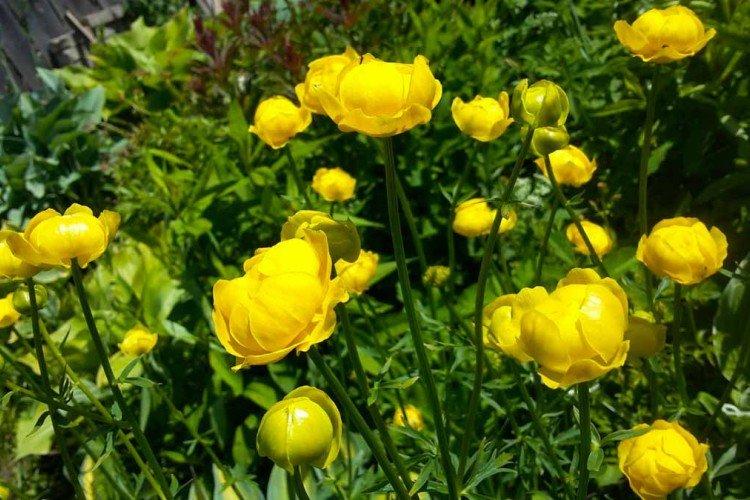
Swimsuit - photo
The bather is not very popular in our gardens. So, by choosing her, you will receive not only this beauty, but also an excellent reason to surprise your loved ones!
